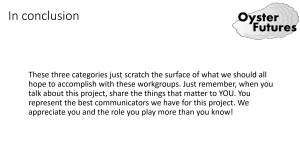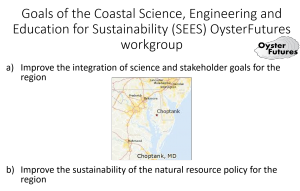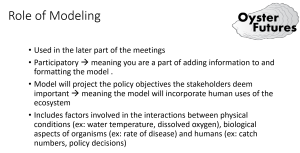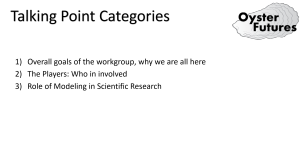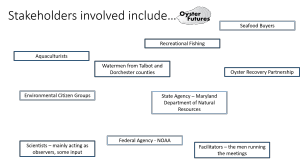Woo hoo! It feels so good to be pretty much done with this project. This seminar has allowed me to think about my research, especially the stakeholders that I will be working with in just a few months, on a deep level; I really feel prepared to start my research because of how much thought this process forced me to put into it.
My project still has two parts, a short verbal beginning speech and a visual component. Right now I’ve done the visual component in PowerPoint, but I’m still talking to my adviser, Troy Hartley, about if that is the best method for when we share this with stakeholders. I am happy with how it turned out visually and hopefully it conveys the message well with stakeholders.
The verbal part of the project hasn’t changed much, but is included below. The one aspect I did change was I addressed Kathy and Karen’s concerns about explaining the collaborative process; that isn’t the role that Troy and I are playing in this research process so I made that more clear.
“Verbal Aspect
Thanks for participating in this OysterFutures workshop group; you are an essential and valuable aspect of this project and the oyster policy recommendations it will deliver to Maryland DNR; it could not happen without you and what we do here is incredibly important.
As community leaders, you have the ears of many in this region – your neighbors, friends, family, colleagues, and employees. By talking with them about this project, and bringing their comments and concerns to the process, you will help make sure that the wider interests of the oyster industry in Talbot and Dorchester counties are represented. First, we’ve compiled some talking points that sum up major aspects of the project. During your discussions, use them as tools; places to jump start the conversation with others. We hope you share things that matter to you and that these outside discussions foster great conversations in this workgroup.
Second, we would like to hear from you what whether there are already questions that you already have about the process, or that you have heard from others? What do you anticipate talking about with others in the oyster industry about the project, and what might be ways that you could suggest to others in the room to make it more effective for the purposes of bringing back those conversations for inclusion in the process?
The process for collaboration will be covered for the moderators during the workgroup meeting, so feel free to ask them any questions you have concerning the collaborative process.
The talking points cover three key aspects of these workgroups. First are the overall goals of this workgroup, why we are all here. Second is going over who is involved and what are all of your roles. Third is the role of modeling in scientific research. We give you a lot of options and things to think over for future meetings and for when you talk to others, but don’t feel inclined to use all/any of these. We hope you’re sharing things that matter to you and will make an impact on the results of this project”
Visual Aspect
I could not get these images to upload in order, so I numbered them so you can understand the direction I was heading in. I’m hoping the appealing visual look of some of the slides helps the ideas stick more with stakeholders and I’m still trying to figure out a clever way to talk about some of them, any suggestions are welcome!

